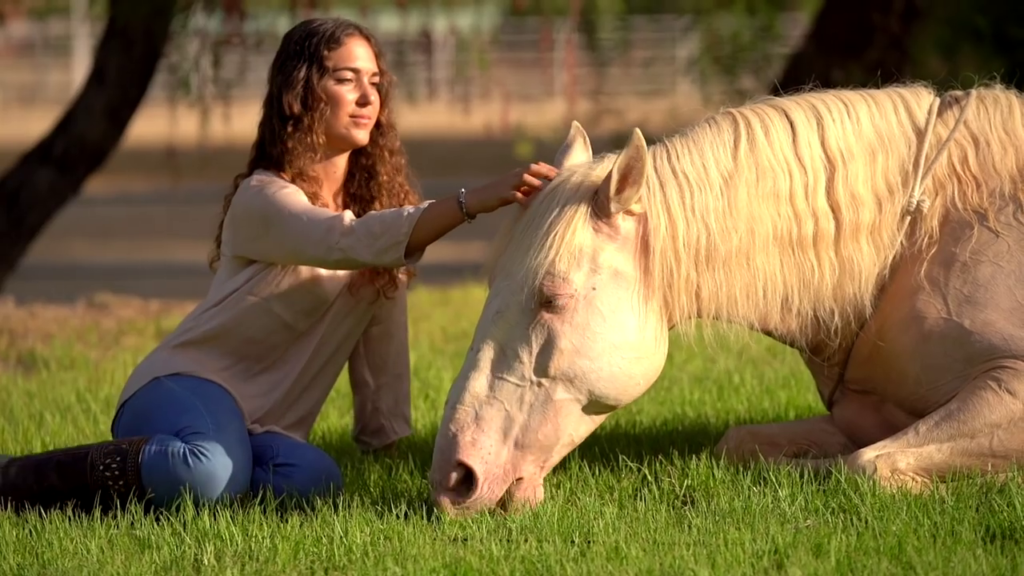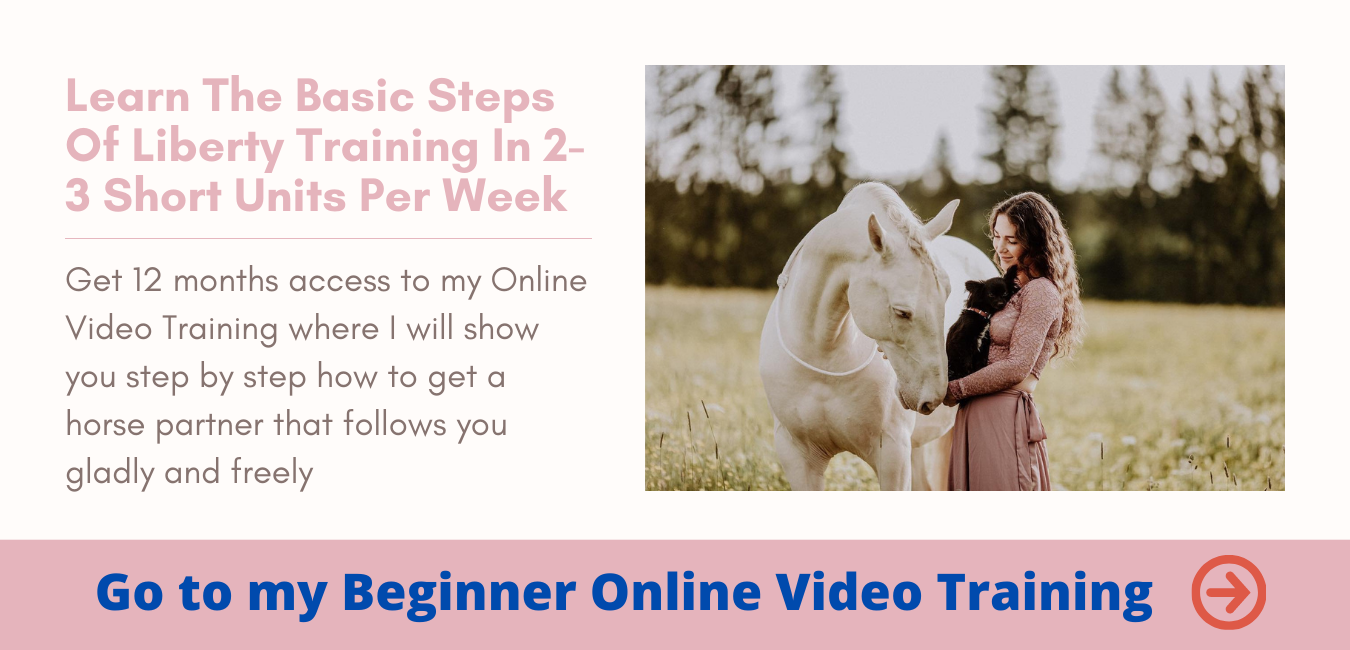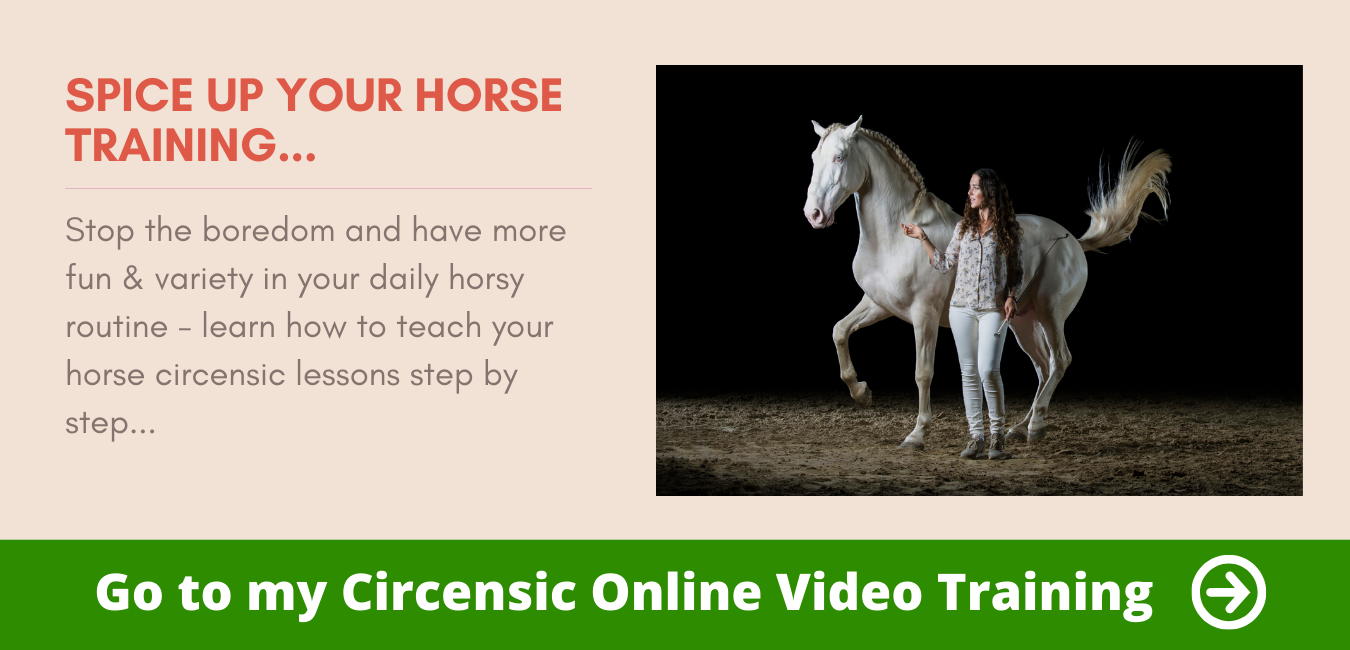Today I would like to reflect with you for a moment what really matters in horse training!
Because even though the “right technique” is of course important, there are many factors that are so much more important!
Timing & Balance
I would like to start with timing and balance.
Since my earliest childhood I have heard from my father, Jean-Claude Dysli, how important these two things are! That everything is in balance and that our timing is right.
Because if we praise or “correct” the horse just 2 seconds too early or too late, it has a massive impact on our training success.
If the horse’s timing is bad, it will never be able to remember which action we have encouraged it to perform – and which action is the reaction we want it to perform in the future.
The goal is therefore always to ensure that our praise or correction is prompt.
Preferably while the horse is still doing exactly what we want – or don’t want. It is therefore worthwhile to work on this area in particular, because it is the basis for whether and how quickly we can teach our horse something.
Emotions – out of place in horse training?
We already talked briefly in some other blog posts about the fact that our own stress is usually transferred massively to our horse. Especially, of course, when we have a lot of it.
We find it difficult to leave our tension and worries behind at the stable gate – and to face our horse with ourselves in balance.
You’ve probably heard that your horse is your mirror – unfortunately, this applies to both the positive and the negative. Our horses have very fine antennae for how we are feeling. And they give back to us what we send out.
That is why it is so important that we are aware of this – and try to leave our everyday stress behind us as soon as we enter the stable.
[su_youtube url=”https://youtu.be/EtqF6BInFnI”]
Of course, this does not mean that you should not show any emotions in horse training! Above all, honest joy about progress and the right reaction to your wish motivates many horses immensely!
What you should “switch off” are negative emotions like impatience, anger or aggression. Because they never bring us forward in training. Maybe you tend to take your horse’s behaviour personally sometimes? Maybe you think that your horse does things on purpose – just to annoy you?
It is best to push such thoughts and feelings aside quickly. And above all, don’t take anything personally!
Horses never intentionally want to harm us humans – unless you have an extraordinary “problem horse” (which in my opinion do not exist – most of the time humans are the cause ? ) that has already had many bad experiences with humans or has been incorrectly imprinted.
In all other cases, if your horse does not do what you want him to do, he has not understood you. Or you could not motivate it enough to do this for you.
So always look at yourself first!
Analyse how you could express yourself more clearly or whether there is another way to reach your goal. Because there is no pattern in horse training – every horse and every person has to find their own way.
Focus: Where the focus goes, the energy flows…
Then the rest really “only” depends on your focus. Do you really know exactly what you want from your horse? Can you visualise it? Also the individual steps on your way to the goal?
Often we lack a concrete plan, which is why it is so difficult for us to make progress in training our horses. Strategic planning can help here! Because only very few horse-human pairs manage well to use every moment without any pressure of expectation – and to let themselves be surprised by where the journey together will lead them today.
A concrete plan does not mean that you have to push through your ideas for today’s training by hook or by crook.
Of course, you should still take into account the form of the day and your horse’s ideas. But it helps you to have a concrete picture in mind that you can visually capture in your thoughts.
Then it is, so to speak, a matter of directing your focus specifically on what you want.
By the way, a good exercise to adjust yourself and the horse to your own focus is the targeted change from a directed focus and an action without focus.
If your horse learns to distinguish these signals from you, misunderstandings will be less and less frequent in your training.
In my favourite exercise, you stand in front of your horse.
Maybe you already know the sending back frontally in front of the horse? To do this, make yourself tall and move towards your horse with a swinging movement of your whip from right to left (as little as possible – standing is best at the end).
As soon as he goes back, take the pressure off and praise your horse. If this exercise works well, now it’s time for the actual exercise – moving the whip without your horse feeling addressed.
To do this, take the tension out of your body, perhaps place one leg in a relaxed position (like a horse at rest) and move the whip without an active target. Your horse should feel that it is not being addressed and remain as relaxed as possible.
Test for yourself what you have to radiate so that your horse feels addressed – or not. In this way you will not only train your own body perception but also your communication with your horse.
With this in mind, I wish you lots of fun and above all patience and calm in your training with your horse! I hope I was able to give you some new impulses to make your training even more conscious.
All the best
Your Kenzie




